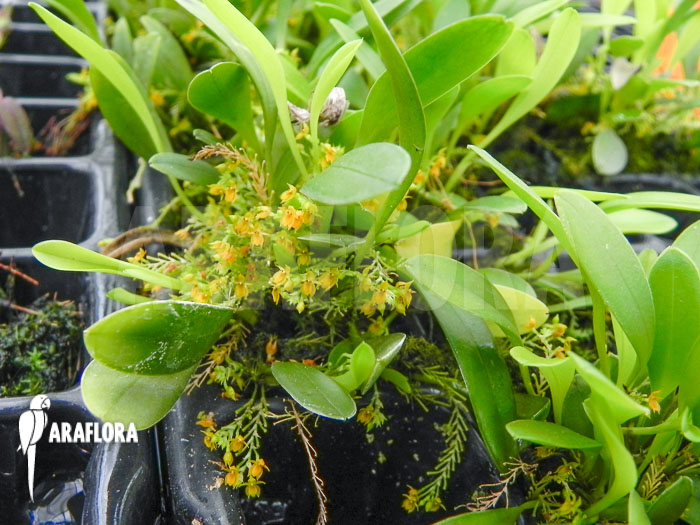Platystele stenostachya - Orchid342
Platystele stenostachya - Orchid342
This orchid is perfect if you're looking for a hardy plant for your terrarium. Platystele stenostachya is found in various regions and varying altitudes which makes it more resilient to less than ideal circumstances. Platystele stenostachya is a very small orchid with flowers smaller than a centimetre. This doesn't take anything away from its beautiful gold and honey coloured flowers.
Currently not in stock
€ 18,00
Keep me up to date?
Araflora will inform you as soon as the product is available again. Please fill in your e-mail address and we will let you know as soon as the product is back in stock. You will get an e-mail message when the product is available again. Unfortunately we cannot say how long this will be or what the price is likely to be.

Receive an e-mail when new stock of this plant arrives.
Share this plant? Press on one of the following icons.
Platystele stenostachya is found in the wild at altitudes up to 1.700 meters from Mexico to Bolivia and Suriname. The leaves of the orchid don't get any bigger than 5 centimetre and the flower stalk is even smaller, with a maximum length of 2 centimetre. The lip of Platystele stenostachya can vary in colour from dark yellow to red. One of these can carry dozens of flowers.



Platystele stenostachya is naturally found in mountainous areas, resulting in an orchid which can handle lower temperatures than others. During the day a temperature of 20⁰C is ideal, dropping to 12⁰C at night. Temperatures below 5⁰C and above 25⁰C can be too much for the orchid. This type needs a lot of light, but should be kept out of direct sunlight at all times, to prevent it from drying out. The humidity of the habitat of Platystele stenostachya should be 80% and slightly more at night. Water with a lot of rainwater or distilled water in the blossoming periods and less in the periods of rest. Proper airflow combined with a proper humidity will help prevent infections and disease. Platystele stenostachya can be kept in a pot with shreds of bark or attached to a piece of bark with moss. You can find this and other components in our ‘Plant Accessories’ section. Fertilize the orchid when needed. Old flowers can be cut from the plant.





 5 cm
5 cm
 5 cm
5 cm












